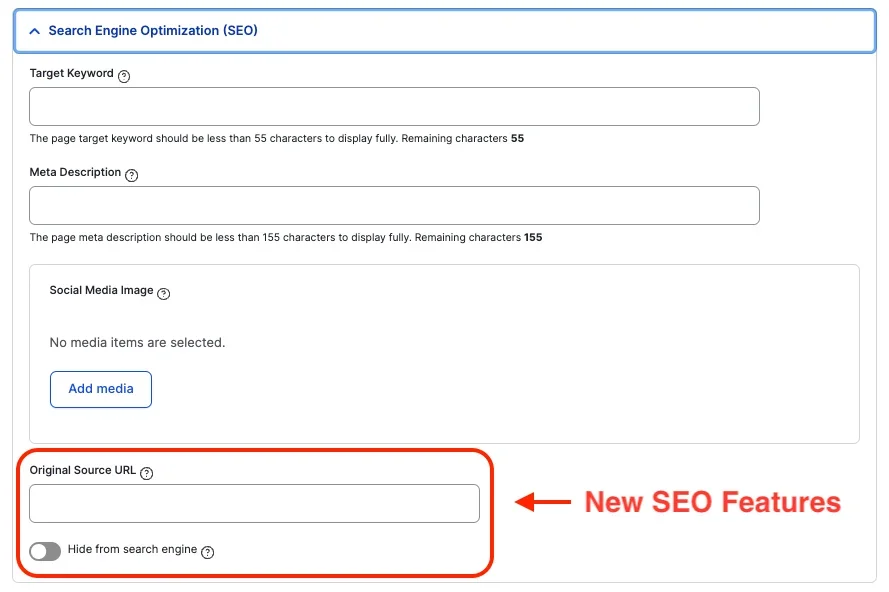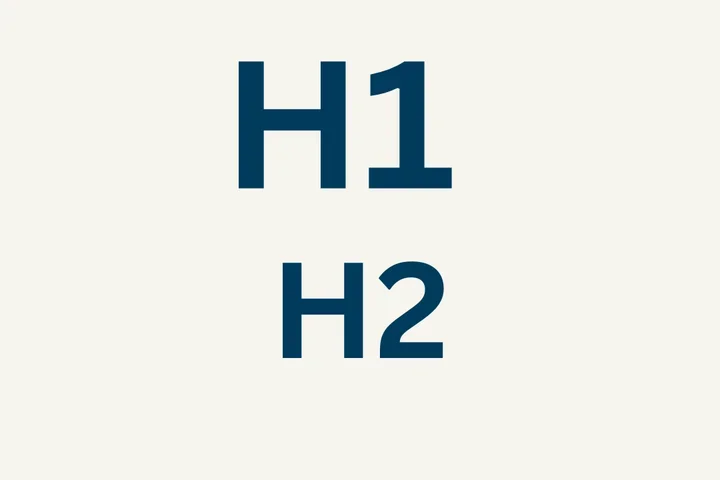New SEO Features: "Hide From Search Engine" and "Original Source URL"
Learn how to hide your page from the search engines and avoid duplicate content issues when reposting content

This article covers the following topics:
- Overview of the New Features
- When the New Features Will Occur
- Benefits of Using Original Source URLs
- How to Hide Content from the Search Engines
- Important Note!
- Additional Resources
Overview of the New Features
We have added two new features to the SEO (Search Engine Optimization) functionality in the Web Platform Healthsciences Healthsciences.
- The ability to add a "Original Source URL" (also called a "canonical tag") to the meta data. This points the search engine spiders to the master copy of the content.
- The ability to select the "Hide From Search Engines" option, which adds a "no index tag" to the meta data. This tells the search engine spiders not to include this page in their results.

When the New Features Will Occur
These features are available now across all four content types: article, page, person, and event.
Benefits of Using Original Source URLs
(Also called a "canonical tag") the Original Source URL adds a single line of code (or meta data) that tells the Search Engine Spiders that this content is actually copied or reposted from somewhere else. For example, if you want to repost an article published elsewhere, the Original Source URL ("canonical tag") will tell the search engines that this page is just a copy and the spiders should index and feature the original source in their results.
It's important to do this so the site that originally published the content owns the ranking in the search engine results. It also helps avoid duplicate content issues, which can hurt a site's reputation and impede its ability to rank.
Too add a "canonical tag" to your content, simply input the full URL of the content you're reposting in the "Original Source URL" field.
How to Hide Content from the Search Engines
The "no index tag" is a single line of code (or meta data) that tells the Search Engine Spiders that they should not include this content in their results. It basically means Google and the search engines will ignore this page and it won't come up when people search for it online. It's useful for archival or out-of-date content, administrative content, as well as log-in or confirmation pages.
Too add a "no index tag" to your content, simple select the "Hide From Search Engines" option, which is directly under the "Original Source URL" field.
Important Note!
Do not use both these features at the same time!!
Use the Original Source URL ("canonical tag") option if you want the Search Engine Spiders to crawl the page but understand it's a copy or duplicate of another URL.
Use the Hide From Search Engine ("no index tag") option if you want the Search Engine Spiders to ignore the page--even though it's unique content--so it doesn't appear in their results.
Additional Resources
- Introducing Our New Web Platform Healthsciences 2.0
- An Easier Way to Login to Your Site
- An Easier Way to Access the Test Site
- Page Title and Breadcrumbs Are Automatically Added to All Content Types
- A New Way to Create a Menu with a Section
- Updated Text Editor (WYSIWYG)
- Site Sections Are Now Available for All Sites
- Views for Articles and Events
- Opening External URLs in a New Tab
- New Image Component Functionality
- New Access for All Site Administrators
- Adding HTML to a Web Platform Healthsciences Page
- Finding All Instances of a Placed Component
SEO Co-working Sessions
Register for the next SEO Co-working Session for answers to your questions about this update.
